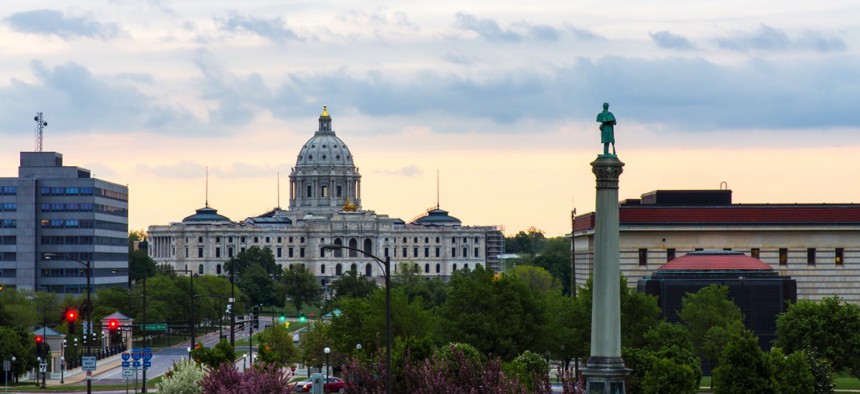An Unusual Thing Happened With State Budgets Around the U.S. in Fiscal 2016

Minnesota State Capital
It had to do with mid-year budget cuts and it’s outlined in a new report from the National Association of State Budget Officers.
Something unusual happened with state budgets across the U.S. in fiscal year 2016, according to a semi-annual report the National Association of State Budget Officers released Tuesday.
Nationwide, 19 states enacted mid-year budget cuts worth $2.8 billion. That marks a historically high number of states with mid-year spending reductions during a non-recessionary period, the report says. Revenue shortfalls during the second half of the fiscal year were the main reason for the cuts, NASBO’s executive director, John Hicks, explained in a recorded overview of the report.
He added that 19 states is a “surprisingly high number” during an economic recovery.
NASBO’s fall 2016 edition of The Fiscal Survey of States report notes:
“All three of the largest sources of general fund revenue had a lackluster performance in fiscal 2016. Personal income tax collections were negatively affected by the weak stock market gains in calendar year 2015, and corporate income tax collections outright declined. Sales tax growth was also weak, tempered by low inflation and slower growth in consumption of taxable goods and services.”
The findings in the new report track with other recent assessments of state fiscal conditions.
State budget growth is moderate, but the return toward levels seen before the Great Recession is happening at a restrained pace. After adjusting for inflation, 32 states spent less in fiscal year 2016 than they did in 2008, around the time the recession struck the U.S., the report says.
Meanwhile, fiscal health is varied across states. In particular, states with economies affected by slumps in the oil, gas and coal sectors have had their finances squeezed. But NASBO notes that differing tax and spending policies, regional economic differences and demographic changes are other factors that have contributed to uneven fiscal conditions as well.
State general fund spending is expected to grow 4.3 percent overall for states in fiscal year 2017, according to the report.
But while 11 states increased general fund spending in the 2017 budget cycle by 6 percent or more, eight states enacted budgets that include plans for less spending compared to the previous fiscal year.
Margaret Kelly, who is NASBO’s current president and Minnesota’s state budget director, pointed out in a statement that “in addition to slower revenue growth, states continue to face rising costs in areas such as health care, pensions, education and infrastructure.”
On the upside, states continue to beef up budget reserves, also known as rainy day funds. Between the 2010 and 2016 fiscal years, according to the NASBO report, 40 states upped their rainy day fund balances and the median balance grew to a 5.1 percent share of general fund spending, from 2 percent. The fiscal year 2008 median was around 4.9 percent.
A full copy of NASBO’s fiscal survey can be found here.
Bill Lucia is a Reporter at Government Executive's Route Fifty and is based in Washington D.C.
NEXT STORY: States' Personal Income Shows Uneven Economic Recovery






